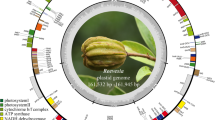Abstract
The genus Dysdercus Guérin Méneville 1831 represents the only taxon within the family Pyrrhocoridae in the New World. Based on morphological features, it has been suggested that American species derived from immigrants from the Old World, most probably from the Ethiopian Region. So far, 10 species from Dysdercus, including six species from the Old World and four species from the Neotropical Region have been cytogenetically analyzed. As is characteristic of Heteroptera, they possess holokinetic chromosomes and a prereductional type of meiosis. While the X1X20 sex chromosome system has been reported in all cytologically analyzed species of Dysdercus from the Old World, the system X0 has been found in all but one species from the New World, regardless of the number of autosomes in the complement. In the present study the male meiosis of D. Albofasciatus Berg 1878 was studied in specimens from four different populations from Argentina. The diploid chromosome number was found to be 2n = 10 + neo-XY. The neo-X shows at each subterminal region a positively heteropycnotic and DAPI-bright segment which corresponds to the ancestral X-chromosome. The origin of this neo-XY system involved, most probably, a subterminal insertion of the ancestral X chromosome in an autosome, followed by a large inversion, which included part of the original X chromosome.
Similar content being viewed by others
References
Chickering AM, Bacorn B (1933) Spermatogenesis in Belostomatidae. IV. Multiple chromosomes in Lethocerus. Pap Mich Acad Sci 17: 529–533.
Halkka O (1959) Chromosome studies on the Hemiptera Homoptera Auchenorryncha. Ann Acad Sci Fenn A IV 43: 1–71.
Jande SS (1959) An analysis of the chromosomes in the four species of the family Belostomatidae (Heteroptera, Cryptocerata). Res Bull (NS) Panjab Univ 10: 25–34.
Kusnetzova VG (1988) The unusual mechanism of sex-chromosome determination in the cotton bug Dysdercus superstitiosus F (Pyrrhocoridae, Heteroptera). Doklady Akademii Nauk SSSR 301: 456–458.
Manna GK (1984) Chromosomes in evolution in Heteroptera. In: Sharma AK, Sharma A, ed. Chromosomes in Evolution in Eukaryotic Groups. Boca Ratton: CRC Press, pp 189–225.
Mendes LOT (1949) Observações citológicas em Dysdercus. Cadeias de cromossômios em tecido somático de Dysdercus mendesi Bloete (Hemiptera-Pyrrhocoridae). Bragantia 9: 53–57.
Mola LM, Papeschi AG (1993) Meiotic studies in Largus rufipennis (Castelneau) (Largidae, Heteroptera). Frequency and behaviour of ring bivalents, univalents and B chromosomes. Heredity 71: 33–40.
Mola LM, Papeschi AG (1994) Karyotype evolution in Aeshna (Aeshnidae, Odonata). Hereditas 121: 185–189.
Mola LM, Papeschi AG (1997) Citogenética de Dysdercus chaquensis (Heteroptera: Pyrrhocoridae). Revta Soc Entomol Ar 56: 20.
Nokkala S, Nokkala C (1983) Achiasmatic male meiosis in two species of Saldula (Saldidae, Hemiptera). Hereditas 99: 131–134.
Papeschi AG, Mola LM (1990) Meiotic studies in Acanonicus hahni (Stål) (Coreidae, Heteroptera). I. Behaviour of univalents in desynaptic individuals. Genetica 80: 31–38.
Piza SdeT (1947) Cromossômios do Dysdercus (Hemiptera-Pyrrhocoridae). Anais de E.S.A. “Luiz de Queiroz” 4: 209–216.
Piza SdeT (1951) Interpretaçao do typo sexual de Dysdercus mendesi Bloete (Hemiptera Pyrrhocoridae). Genét Ibér 3: 107–112.
Schrader F (1940) The formation of tetrads and the meiotic mitosis in the male of Rhytidolmia senilis Say (Hemiptera, Heteroptera). J Morph 67: 123–141.
Ueshima N (1979) Hemiptera II: Heteroptera. Berlin-Stuttgart: Gebrüder Borntraeger.
Van Doesburg PH (1968) A revision of the New World species of Dysdercus Guérin Méneville (Heteroptera, Pyrrhocoridae). Zool Verhandel 97: 1–215.
Author information
Authors and Affiliations
Corresponding author
Rights and permissions
About this article
Cite this article
Bressa, M.J., Papeschi, A.G., Mola, L.M. et al. Meiotic Studies in Dysdercus Guérin Méneville 1831 (Heteroptera: Pyrrhocoridae). I. Neo-XY in Dysdercus Albofasciatus Berg 1878, a New Sex Chromosome Determining System in Heteroptera. Chromosome Res 7, 503–508 (1999). https://doi.org/10.1023/A:1009262210338
Issue Date:
DOI: https://doi.org/10.1023/A:1009262210338




